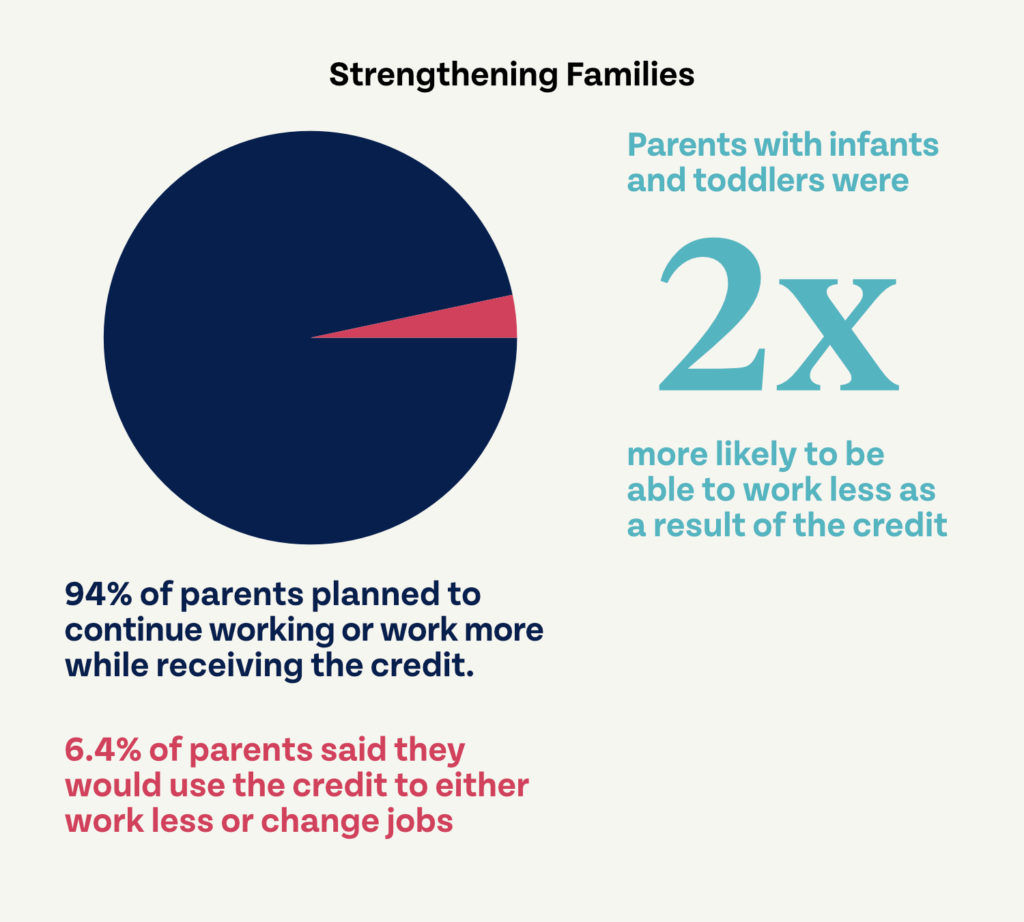The Child Tax Credit: Bipartisan Policy that Works to Build Both Families and the Economy

Pro-Work, Pro-Family Policy
At this moment, members of Congress are working late nights to negotiate generational investments in the future of our country. And as inflation threatens the earnings and savings of all Americans, Congress has a responsibility to ensure that hard-earned taxpayer dollars are spent efficiently, with purpose, and with a long-term plan to benefit all Americans.
Just five months into its temporary expansion, the Child Tax Credit shows promise as a pro-work, pro-family program championed by policy experts on both sides of the aisle. The CTC is making a real difference in the lives of families around the country, helping them cover rising costs, and while experts don’t always agree on everything, the two of us do agree that the Child Tax Credit is an example of responsible government spending.
Temporarily expanded as part of the $1.9 trillion American Rescue Plan, the CTC is the opposite of a bureaucratic, out-of-control government spending program. The CTC offers an innovative approach to poverty relief for low- and middle-income Americans. The program provides monthly payments of $250 or $300 per child to married parents that make under $150,000 combined or $112,500 for single parents. Most parents were automatically enrolled to receive the monthly payments, relieving them of unnecessary hurdles and removing bureaucratic complications.
Whether you’re a progressive or a conservative, research and evidence leads to the same conclusions – that Child Tax Credit payments are a data-driven policy solution with both economic and social benefits.
As study after study demonstrates, including recent research conducted by the Social Policy Institute of Washington University in St. Louis (SPI), in partnership with Humanity Forward, it remains a gold-standard bipartisan solution to encourage work while alleviating child poverty and helping families overcome inflation.
The Child Tax Credit allows parents to make the best decisions that work for their family instead of having the government dictate what they should be doing with each check. Whether that be paying rent, buying groceries, purchasing necessities for their children’s schooling, or saving for an emergency – cash transfers give parents the help they need to make ends meet without attempting to micromanage their decisions.
According to the SPI study, parents are using these monthly payments to save for emergencies, pay for necessities for their children, pay for food, and contribute to college funds. Low-income families, the most vulnerable to inflation, were also more likely than higher-income families to spend the credit on essentials for their children.

Some worry that cash transfers like the Child Tax Credit cause people to work less. But research suggests that this concern is misguided. The SPI study found that nearly 94% of parents planned to continue working while receiving the CTC, a finding consistent with past studies of similar modest cash transfers. And in a recent survey by The Center for Law and Social Policy (CLASP) one in four Child Tax Credit recipients said it was helping them work more hours. By helping parents to cover the cost of child care, the Child Tax Credit has even helped ease the labor crisis, and thus helped mitigate inflation.
Only 6.4% of parents said they would use the credit to either work less or change jobs. But remember that “working less” isn’t always a socially undesirable thing for parents to do. In some cases, the CTC likely helps one parent choose to spend more time at home with young children while the other parent works. It can also help parents that may have a disability, or those who have seasonal jobs of the sort that would typically disqualify them from participating in programs with so-called work requirements.
Another common concern about cash transfer programs is that they’re too expensive. But the CTC is an investment that, over the long term, can more than pay for itself. The Child Tax Credit is estimated to generate $18.6 billion in spending in local economies while only costing $14.9 billion, per month. This kind of monthly stimulus, in contrast to yearly lump-sum payments, creates sustainable economic growth with minimal inflation. If it becomes permanent, the Child Tax Credit is predicted to generate economic growth of over $800 billion per year – more than eight times its own cost.
Even more importantly, we know that investments in children, especially at the earliest ages, generate significant social and economic returns. Nobel Prize-winning Economist James Heckman has calculated that every dollar invested in high-quality early childhood education returns 10 percent per child, per year for the life of the child – from better health outcomes, greater earning potential, reductions in crime and recidivism, and more.
Extending the Child Tax Credit, a program that has been championed by both Republicans and Democrats, can better put our country on a path to those returns.
Elaine Maag is a principal research associate in the Urban-Brookings Tax Policy Center at the Urban Institute, and a member of Humanity Forward’s Bipartisan Advisory Board
Matt Zwolinski, PhD, is the director of the University of San Diego’s Center for Ethics, Economics, Public Policy and co-director of USD’s Institute for Law and Philosophy, and a member of Humanity Forward’s Bipartisan Advisory Board